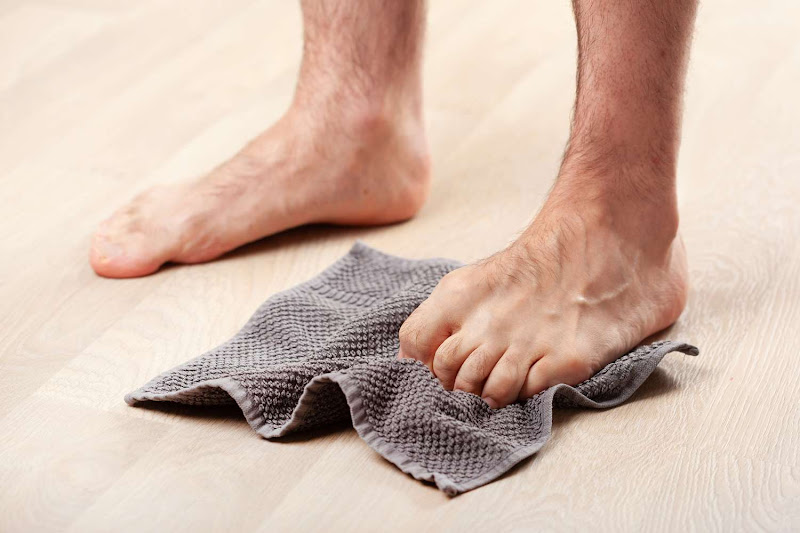Let me guess, your ankles give out when you’re walking on uneven pavement, or maybe they’ve been rolling a bit too easily when you’re on the stairs. You might think, “It’s not that serious,” until one misstep sends you limping for a week. I see it all the time.
You’re not alone. Weak ankles are incredibly common, and most people don’t realize just how much they rely on them until something goes wrong.
1. Why Are Your Ankles Always Giving Up on You?
Weak ankles aren’t just annoying. They can mess with your balance, make everyday activities harder, and lead to frequent sprains. I had a patient last year, mid-40s, active, loved hiking. She brushed off a few mild ankle twists until one wrong step during a weekend trail walk caused a serious sprain. Recovery took months, and at one point she sighed and said, “I really should’ve done something about this earlier.”
Sound familiar?
Maybe it’s been happening for a while. Maybe you’ve started avoiding stairs or uneven sidewalks. If your ankles are wobbling or rolling too often, they’re trying to tell you something. Don’t ignore them.
2. Start Small: Simple Moves That Wake Up Your Ankles
You don’t need fancy equipment or a gym membership to build stronger ankles. Honestly, I give most of these ankle strengthening exercises to patients to do at home, even while watching TV or winding down before bed.
Towel Scrunches: Sit on a chair, place a towel on the floor, and use your toes to pull it toward you. It may look silly, but it lights up those small, forgotten muscles.
Calf Raises: Stand behind a chair, lift your heels slowly, and lower them with control. Do it barefoot for added benefit.
Toe Taps: While seated, tap your toes rapidly for 30 seconds. Great for waking up the front ankle muscles.
These aren’t just random movements. They’re proven ankle strengthening exercises that can reduce your risk of injury over time.
3. Balance Is Your Secret Weapon
Here’s something I always tell my patients: your ankles are like shock absorbers and stabilizers. When they’re weak, your balance suffers.
Want to fix that?
Single-Leg Stands: Start by standing on one leg while brushing your teeth. You’ll feel those ankle muscles firing in seconds.
Balance Boards: If you’re up for a challenge, try a wobble board. We use these all the time in our clinics.
Eyes-Closed Training: This one’s advanced. Try standing on one leg with your eyes shut. Trust me, it’s harder than it sounds, but it’s one of the best home remedies for weak ankles I’ve seen.
And the best part? You can sneak these into your daily routine without overhauling your schedule.
4. Listen to Your Ankles
Pain, swelling, or that constant feeling like you’re about to roll over? That’s your body waving a red flag.
One woman I treated recently had persistent ankle aching but kept pushing through her workouts. “I thought it was just part of aging,” she told me. Turns out, she needed structured care. She started with a search for physical therapy near me, landed in our clinic, and within weeks felt more stable than she had in years.
If you’re noticing even small signs, like frequent rolling or soreness after walks, it might be time to pause and reassess.
5. Get Professional Help When It’s Time
Here’s the thing: DIY is great up to a point. But if things aren’t improving or getting worse, it’s time to bring in the pros.
Ankle rehabilitation in North Wales offers customized treatment to target the exact muscles and structures you need to strengthen. Not just a one-size-fits-all approach.
And if your pain extends into the joints, joint pain treatment in East Norriton can uncover underlying issues, like arthritis or nerve entrapments, that you might not even know are affecting your ankles.
At Total Performance Physical Therapy, I’ve worked with runners, retirees, teens post-injury, and people who simply want to stop rolling their ankles when they step off a curb. You don’t need to be an athlete to benefit from care.
6. Don’t Wait for a Bigger Injury to Start
We say this a lot in our clinics: it’s easier to prevent than to recover.
Just a few minutes a day can make all the difference. Consistency, more than intensity, is what gives you real results. Do a little, do it often, and watch your confidence and stability grow.
If you’re unsure where to begin or just want someone to take a look, we’re happy to help. A quick consult at your nearest PT clinic might give you more answers than weeks of guessing.
Whether you’re considering physical therapy near me, looking into ankle rehabilitation in North Wales, or exploring joint pain treatment in East Norriton, know that help isn’t far, and it doesn’t have to be complicated.
